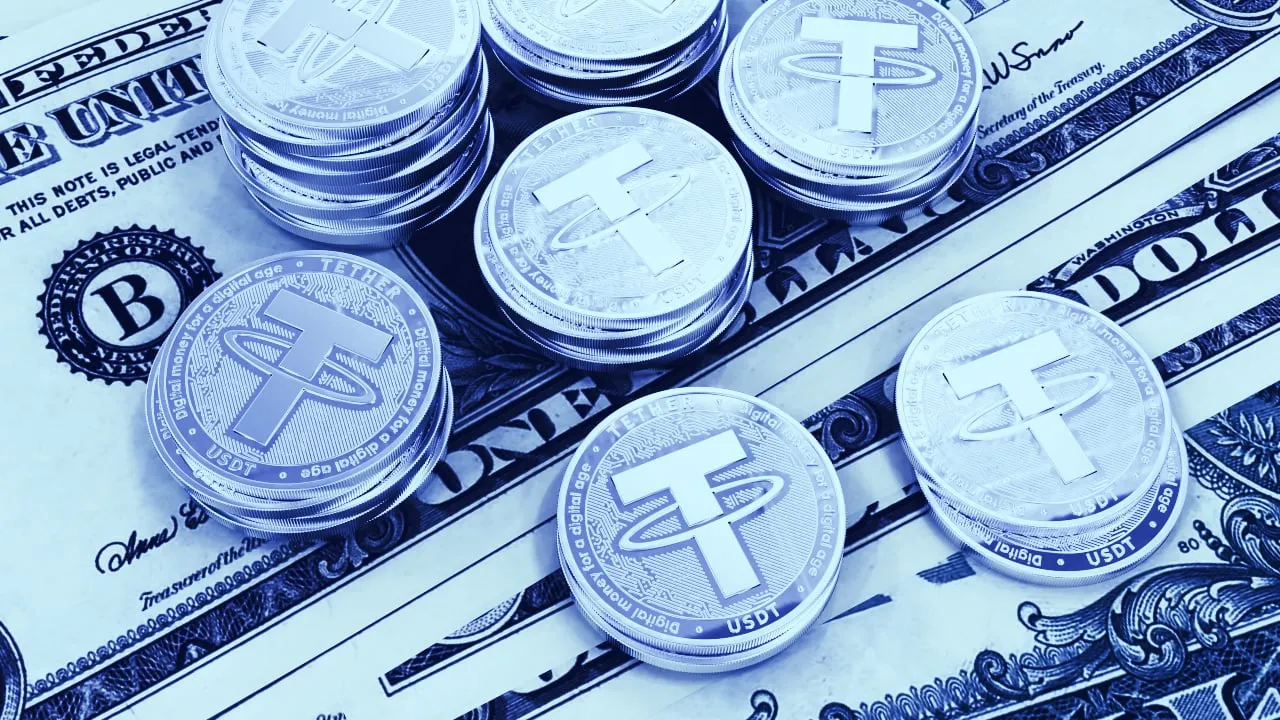In brief
- A new study from UC Berkeley researchers contradicts previous reports of Tether used to manipulate Bitcoin prices.
- The new research finds no evidence of stablecoin issuance driving up prices.
- The report suggests market participants are buying stablecoins to escape volatility, or to arbitrage between issuers and secondary markets.
New research is attempting to put one of crypto’s favorite conspiracy theories to rest.
A new report penned for the Centre for Economic Policy Research (CEPR) entitled “Stable coins don't inflate crypto markets” takes a look at the degree to which “aggregate stable coin issuance” drives the price of Bitcoin and other cryptocurrencies.
UC Berkeley professors Richard K Lyons and Ganesh Viswanath-Natraj analyzed market inflows for Tether and other stablecoins from October 2017 to the present to search for an answer.
And that answer, according to their research, is that there is zero correlation: “Our bottom line: We find no systematic evidence of stable coin issuance driving cryptocurrency prices,” said the report.
These findings are in stark contrast to a 2018 paper by John Griffin of the University of Texas and Amin Shams of Ohio State that alleged that the Tether stablecoin (USDT) was used to prop up Bitcoin’s price in 2017.
The theory quickly caught the imaginations of the industry and the mainstream press, and it was then followed up last year by an even more salacious claim: a lone whale caused the 2017 price pump, the researchers alleged. Bitcoin’s price rises just after Tether prints a big batch of USDT, the researchers reasoned, so this could be driving the price action.
But these findings did not go uncriticized. Counterarguments posited that if the price of Bitcoin rises after Tether prints coins, it means market participants are buying USDT to enter the market—or, they are fleeing to USDT for stability in times of market downturn. And this is what appears to have happened in March, when the price of Bitcoin tanked but Tether and other stablecoins saw record inflows.
It’s possible, then, that stablecoins like Tether are merely being used how they were intended by market participants. And this, in effect, is the conclusion that Lyons and Viswanath-Natraj’s research reaches.
“[S]table coin use has risen dramatically in the last two years, with estimates of total trading between Bitcoin and Tether, the largest stable coin, exceeding the volume of Bitcoin/USD in 2019,” the report stated. “That stable coin use should be growing so rapidly is consistent with their ‘raison d’etre’—to solve the store-of-value problem by pegging their value to the US dollar.”
“Using our more precise measure of Tether flow to the secondary market, we find no significant effect on prices of major non-stable crypto currencies,” the CEPR researchers said in their report.
“This result is robust to the choice of sample period—including the late 2017 period in which Bitcoin prices surged—and holds for other major stable coins as well.”
Arbitrage and stability
The new research pointed to two primary drivers of stablecoin activity: exchange arbitrage and flight from volatility.
It also explained that many traders will purchase USDT from the Tether Treasury for $1 and sell it on exchanges and other secondary markets for a buck or so more when Tether is trading above its peg.
These arbitrageurs are a big presence in this market. For example, “a 100 basis point (1 cent) increase in the dollar price of Tether results in a flow of approximately $0.3 billion to the secondary market.”
In addition to this arbitrage, traders are also simply using stablecoins like they were designed: as a vehicle for stable value in times of market volatility.
“[S]table coins consistently perform a safe-haven role in the digital economy,” said the researchers. The report described stablecoins “as a vehicle currency” for activity in the digital economy. Typically, stablecoins are most used by traders to hedge against dips in the market.
This is what is happening now, the researchers found, noting “significant premiums [on stablecoins] during the COVID-19 panic of March 2020.”
So what’s the real reason behind Tether printing billions of tokens, now as before? According to this new research, people just want “dollars”—and they’ll take them in either real or digital form.

